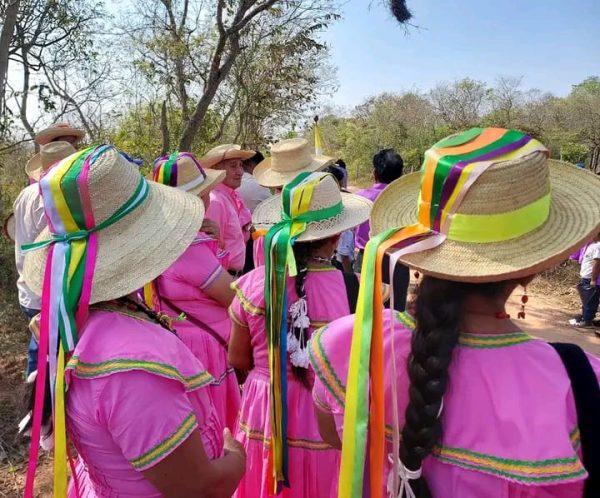
A couple of weeks ago, we wrapped up the Chiquitanian photo contest that Wikimedians of Bolivia organized with the participation of young people from the group “Jóvenes Chiquitanos Unidos por el Medio Ambiente” (JUMA – Chiquitanian Youth United for the Environment), in Lomerío and Concepción.
The contest ended with the publication of just over 20 images of different features in the Chiquitano region.
The municipalities of San Antonio de Lomerío and Concepción are located in the department of Santa Cruz, in eastern Bolivia, and they are considered indigenous due to the vast majority of the population that self-identifies as part of the Chiquitanian indigenous people. The second language of the region is Bésiro, although its use is still limited.
From landscapes, festivities, typical costumes of the Monkox culture to representative places of the regions in which they live – all of these were photographed by indigenous youth and adolescents and later, of course, these were used to enrich the information available on Wikimedia Commons.
This is a first step in the work of liberation of information that we’re doing in the Chiquitania and we are happy with the results because, beyond the quantity, it should be noted that the photographs were taken and released by the same indigenous youth who live and know the region, who identified these spaces as representative and important to be shown in the free encyclopedia. That is to say: they worked from their narratives.

In addition, the number of photographs published (which is still important) was added to those already existing in the category “Chiquitanía region, Bolivia” and little by little it’s adding to information available from and about Bolivia, which is still scarce.
The Chiquitano indigenous people inhabit over 12 of the 56 municipalities in the Santa Cruz region, making it one of the indigenous peoples with the largest registered population in Bolivia (145,653 people self-identified as members of the community during the 2012 Population Census).
That is why the effort made by young people to share information from this region is important, especially for those who live in the community Puquio Cristo Rey, in the municipality of Lomerío, who despite the poor internet connection managed to publish photos on Wiki.
The Wikimedians of Bolivia User Group arrived in this region and we connected with the JUMA youth group at the invitation of the institution Apoyo Para el Campesino Indígena del Oriente Bolivia (APCOB – Support for the Indigenous Farmer of Eastern Bolivia), which works to advance the rights of indigenous communities in the Bolivian east.
The work is not finished, because, as we indicated, this is only a first step to move forward, together with the new allies, in the liberation of information available in this magical region of Bolivia.

Can you help us translate this article?
In order for this article to reach as many people as possible we would like your help. Can you translate this article to get the message out?
Start translation